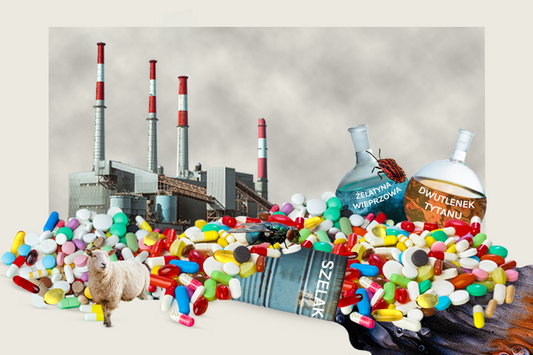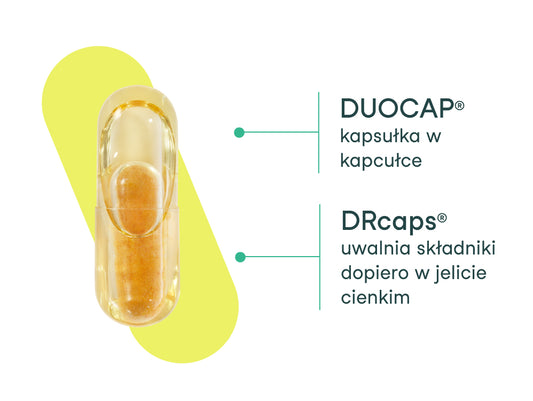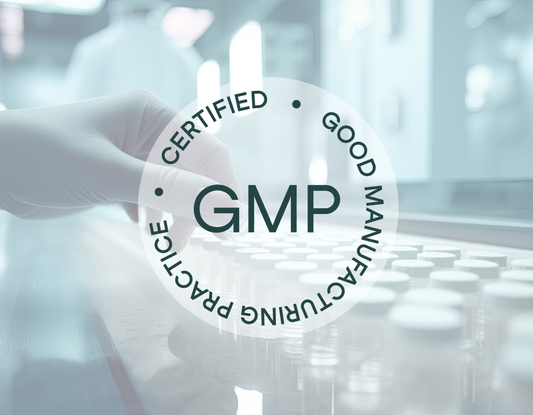
Problems with bone regeneration may occur after the age of 30. However, natural changes in bone structure that occur with age do not always mean that they will lead to the disease osteoporosis. In this article we talk about how to support bone health and reduce the risk of fractures.
Human bones are living tissue. There are constant processes of disintegration of old "parts" and creation of new ones. However, as we age, bones begin to lose their density and strength. This is the result of natural changes in regenerative processes and the balance between the breakdown and formation of new bone tissue.
After reaching the age of 30, the process of creating new bone tissue slows down and the decay process begins to predominate. The most dramatic decline in bone density and bone mass in women occurs within a year after menopause 1 . In men, the process of bone weakening also continues to progress with age, although without such significant declines.
All mature people are more susceptible to fractures and diseases related to the skeletal system. However, the natural decline in bone density with age does not always mean osteoporosis. This disease can only be considered when the bone mass is 2.5 times lower than the average result of healthy young people. This can be checked by performing a densitometry test.
In Poland, still few people decide to undergo diagnostics. The National Health Fund estimates that approximately 1.7 million Poles may have osteoporosis, although 555,000 have been formally diagnosed. people (most are women) 2 .
How to support bone health in adulthood?
Osteoporosis is considered an incurable disease, but with a healthy lifestyle, a varied diet, wisely selected supplementation, and appropriate exercises, you can slow down its development and reduce the risk of serious bone fractures.
However, if you are dealing with the natural loss of bone density associated with age and have not been diagnosed with osteoporosis, there is a good chance that you can avoid this disease if you take holistic care of your bone health.
Diet for healthy and strong bones.
Scientific research from the Framingham Osteoporosis Study involving over 5,000 people who assessed the impact of nutrition on bone health allows us to conclude that a diet rich in fruits and vegetables helps maintain bone density and slow down the loss of density with age. 3 . And people who eat less than 5 portions of fruit and vegetables a day have a greater risk of hip fractures 4 . Scientists believe that the protective effect of vegetables and fruits is achieved due to the fact that these products contain:
- Vitamin K. It helps direct calcium to your bones (which we'll talk about in more detail later). Foods rich in vitamin K include leafy greens such as spinach, kale, chard, broccoli, Brussels sprouts, cabbage, cauliflower, asparagus and soybeans.
- magnesium . It is necessary for proper calcium metabolism (more on this later in the article). Foods rich in magnesium include nuts, especially almonds, cashews and walnuts, seeds such as pumpkin, sunflower and hemp seeds, spinach, sorrel, avocado, dark chocolate, bananas, Brussels sprouts, and buckwheat.
- potassium . This mineral affects bone metabolism by limiting unnecessary calcium excretion by the kidneys 5 . Products rich in potassium include bananas, avocados, eggplants, tomatoes, cabbage, pumpkin, spinach, potatoes, carrots, oranges, chickpeas, lentils, broccoli, plums, and apricots.
- vitamin C. It can inhibit excessive activity of osteoclasts - cells that destroy minerals and collagen in bones, thus causing their breakdown, and also support the activity of osteoblasts - cells responsible for the creation of new bone tissue 6 . Products rich in vitamin C are kiwi, citrus fruits, berries, pineapple, peppers, cabbage, spinach, parsley, tomatoes.
- carotenoids, especially lycopene. This compound helps reduce oxidative stress and markers of bone breakdown 7 . Products rich in lycopene include tomatoes (especially processed ones, e.g. in the form of concentrate, tomato sauces), watermelon, pink grapefruits, red peppers, red currants, red cabbage.
The Framingham study also draws attention to the fact that people who regularly eat fish and seafood are able to increase their bone density compared to people who do not consume these products. 8 . Scientists explain this by the high content of protein and unsaturated fatty acids 9 in fish and seafood.
A sufficient supply of dietary protein combined with calcium is also an important factor in bone health. Interestingly, in study participants who were calcium deficient, higher protein intake increased the risk of hip fractures 10 . This emphasizes the importance of balance and ensuring the supply of all the ingredients necessary for the body. Products rich in calcium include milk, yogurt, cheese (cottage cheese, yellow cheese, blue cheese), leafy vegetables: kale, broccoli, spinach, chard, tofu (soy cheese), fish with edible bones: e.g. sardines, herring, chia seeds , walnuts, figs, beans. And you can read more advice on how to get more calcium from food in a separate article .
Vitamin B12 also plays a role in bone health . Its deficiencies are associated with loss of bone density 11 . Vitamin B12 is mainly found in animal products. Here are some foods rich in vitamin B12: meat (beef, lamb, pork), fish (tuna, salmon, mackerel, sardines, herring), shellfish (crab, lobster), poultry (chicken, turkey), dairy products (milk, yogurt , cheese), eggs, liver.
There is also a list of foods that should be avoided for the sake of strong bones:
- sweet carbonated drinks. These drinks may be high in phosphorus, which can affect the balance of calcium and phosphorus in the body and increase the risk of bone fractures. 12 .
- alcohol. Excessive alcohol consumption can lead to weakened bones 13 .
- excess caffeine. Large amounts of caffeine in mature people may be a factor in the development of osteoporosis 14 .
- refined carbohydrates and fast food . Excessive consumption of highly processed products rich in simple sugars, often containing a lot of salt, saturated fats and unhealthy additives, reduces the body's ability to maintain bone density. 15 .
Lifestyle and physical activity for bone health.
Regular physical activity is a key part of maintaining healthy bones. Movement stimulates the process of creating new bone tissue and increases its density. Most often, mature people are recommended gentle forms of exercise, e.g. Nordic walking , which also has a beneficial effect on the cardiovascular system and is much less burdensome on the joints than e.g. running or other cardio training. You can read more about the advantages of Nordic walking in a separate article .
Strength training , including weight lifting or resistance exercise, also helps to strengthen bones by stimulating the production of bone cells . Regular strength training has the ability to influence the structure, appearance of bones, their shape, size and density. This helps reduce the risk of osteoporosis and slows down its development, increases the strength of bones and their resistance to fractures. You can find more information about this in this text.
When it comes to lifestyle, it is also important to avoid smoking . Research shows that smoking accelerates the loss of bone density and osteoporotic changes. However, scientists did not observe such changes in former smokers 16 , which means it's never too late to quit smoking.
No less important for healthy bones is regenerative sleep . Mature women working night shifts have a 37% higher risk of hip and wrist fractures compared to women who work during the day 17 . Correct circadian rhythms and uninterrupted sleep at night are the basis for the proper functioning of the entire body, including its skeletal system. You will learn how to ensure nourishing sleep in this article .
Supplementation for bone health - what do you need to know?
If you want to take care of strong bones, a varied diet rich in protein, vegetables, fruits, healthy fats, as well as other products listed above in the nutrition chapter is essential. However, even if we eat healthily, we often do not provide ourselves with all the necessary ingredients in appropriate quantities. Moreover, research shows that we are most often deficient in substances that have a direct impact on bone health (including vitamin D and magnesium, which we will talk about in a moment).
It is worth supplementing your healthy diet and active lifestyle with wisely selected supplements that will help eliminate these deficiencies. However, before making a decision to purchase an advertised, typically "bone-in-the-bone" product, it is worth delving deeper into the topic. Improper dietary supplements may not only fail to produce results, but may even seriously harm your health.
Is it worth supplementing calcium?
When we hear "supplement for strong bones", the first association that comes to mind for most people is calcium. However, bone tissue has a much more complex structure.
The main minerals found in bones are calcium and phosphorus. Additionally, magnesium, sodium, potassium and citrate ions are also present 18,19 . Minerals constitute on average 60-70% of dry bone tissue 20 . The rest are mainly protein structures (collagen and others).
The proper structure and structure of bones depend on many factors, primarily on the functioning of the hormonal system. These hormones regulate the processes related to bone formation, maintenance and breakdown, and also control the absorption of minerals (e.g. calcium):
- Thyroid hormones. Thyroxine (T4) and triiodothyronine (T3) influence the metabolic rate as well as the processes of bone formation and breakdown. Excessive thyroid activity (hyperthyroidism) can lead to accelerated bone tissue destruction, while hypothyroidism can inhibit the process of new bone formation.
- Parathyroid hormone (PTH) . PTH is produced by the parathyroid glands and regulates the level of calcium in the blood. When calcium levels are low, PTH stimulates the release of calcium from bones to raise calcium levels in the blood. Long-term excessive PTH activity may lead to bone loss.
- Calcitonin. It is produced by thyroid cells and acts in the opposite direction to PTH. It lowers blood calcium levels by inhibiting the release of calcium from bones.
- Sex hormones. Estrogens support the activity of osteoblasts, cells responsible for the formation of new bone tissue. In women, the decline in estrogen levels during menopause leads to increased bone loss and the risk of osteoporosis.
- Growth hormone. It stimulates body growth and stimulates osteoblast activity.
All of these hormones work together to maintain balance. Therefore, if you want to have bone health, it is worth taking care of the balance of the hormonal system and the health of the body as a whole. Calcium supplementation alone is not the solution in this case. Calcium taken in the form of a tablet does not equal calcium absorbed and directed to the bones.
Moreover, calcium supplementation may have serious health consequences, e.g. in the form of kidney stones or heart disease. The results of a German scientific study showed that people who relied on supplements as their main source of calcium had an almost 3 times greater risk of heart attack compared to those who did not use such supplements. 21 . A much safer option to ensure the right amount of this element is a varied diet rich in calcium. Especially since food products offer it in abundance. You can read more about this in a separate article .
How does the “healthy bones triangle” work?
Although calcium supplementation is not a universal solution, there are ways to help the body effectively absorb this element from food and direct it to the bones (instead of the kidneys or blood vessels). It's time to get to know the "golden triangle of healthy bones", i.e. vitamin D3, vitamin K2 and magnesium.
The action of these compounds in our body is interconnected on many levels:
- Vitamin D regulates the absorption of calcium in the small intestine and the activity of parathyroid hormone (which controls the proper level of calcium in the blood). In conditions of its deficiency, we are able to absorb only 15% of calcium from the diet 22 . However, only the active form of vitamin D has this effect, the formation of which requires... magnesium!
- Magnesium , in addition to supporting the formation of the active form of vitamin D in the body, also affects parathyroid hormone (PTH). Magnesium deficiency means low PTH levels. This, in turn, also disrupts calcium metabolism. Moreover, low magnesium levels also lead to greater urinary excretion of calcium 23 .
- Vitamin K2 activates specialized proteins in our body that capture unnecessary calcium from the blood and soft tissues and direct it to the bones. 24 . Vitamin K2 works synergistically with vitamin D.
Deficiencies of these ingredients are common. 90% of people in Poland may be deficient in vitamin D 25 , 90% of men and 70% of women in our country do not consume enough magnesium 26 . Therefore, it is worth adding these ingredients to your daily supplementation routine.
In turn, vitamin K2 in our body is produced mainly by intestinal bacteria 27 . With age, their number and diversity decreases, which also means a decrease in K2 production. Therefore, taking additional vitamin K2 may especially help mature people.
Everyday base for women 50+ years old and Magnesium with vitamin B6 from nikalab to protect the health of mature women.
The perimenopause period is often a challenge for women, both because of the fears and myths associated with it, but also because of the deterioration of health. However, the period of maturity does not have to mean a limitation of activity or loss of health. The right approach and care for your body can help you maintain great health, well-being and appearance. Through a holistic approach that includes proper diet, physical activity, adequate sleep and stress management, a woman can effectively manage perimenopausal symptoms, maintain healthy bones and cardiovascular system, and maintain energy levels and a radiant appearance.
Supporting women at this stage of life is our goal when creating nikalab dietary supplements. In the Everyday 50+ Years Base, we have included ingredients that help replenish the most common deficiencies and have a multidimensional impact on health, well-being and beauty, proven in clinical studies (more information about the ingredients of nikalab dietary supplements can be found here ).
Everyday base for women 50+ is a set of vitamins, antioxidants and Omega-3 acids (DHA + EPA) selected based on the needs of a mature body. Here are some of the properties of ingredients scientifically confirmed in research:
- vitamin E helps protect cells against oxidative stress, supports natural defense mechanisms that become less effective with age,
- coenzyme Q10 slows down the production of free radicals that damage cells and accelerate aging; it also reduces visible wrinkles and improves skin smoothness.
- vitamin A contributes to maintaining the proper condition of the skin and mucous membranes,
- folic acid and Omega-3 acids (DHA + EPA) help maintain immunity, which weakens with age. Their deficiency may lead to chronic inflammation. Research suggests that omega-3 deficiency may increase the risk of certain cancers, such as colon and breast cancer.
- Omega-3 acids (DHA + EPA) and vitamin E help protect against deterioration of cognitive functions and the risk of neurodegenerative diseases (e.g. Alzheimer's),
- vitamin B12 supports the nervous system and affects the quality of sleep,
- EPA and DHA (Omega-3) acids support heart health, maintaining proper blood pressure and proper lipid profile,
- choline contributes to the proper processing of fats and the proper functioning of the liver.
The base also contains vitamins D3 and K2 , which regulate the absorption and use of calcium in the body and whose contribution to maintaining bone density is difficult to overestimate.
The perfect complement to the Everyday Base for 50+ years is Magnesium with vitamin B6 from nikalab. Magnesium is the so-called a macronutrient, which means that our body needs it in quite large amounts. That's why we have included a highly absorbable and bioavailable form of this mineral (trimagnesium citrate) in a separate dietary supplement so that you can conveniently provide yourself with the right amount.
The combination of the Everyday Base 50+ years with Magnesium from nikalab allows the "golden triangle of healthy bones" (vitamin D, vitamin K and magnesium) to accomplish its task most effectively. As a result, the calcium found in the products on your plate will be optimally absorbed, reach the bone tissue and rebuild it.
*If your doctor recommends additional calcium supplementation, vitamin D, vitamin K and magnesium contained in nikalab dietary supplements will support its absorption and use.
Bibliography:
- Hunter DJ, Sambrook PN. Bone loss. Epidemiology of bone loss. Arthritis Res. 2000;2(6):441-5. doi: 10.1186/ar125. Epub 2000 Aug 3. PMID: 11094456; PMCID: PMC128872.
- “NFZ about health. Osteoporosis", Warsaw, November 2019 Headquarters of the National Health Fund, Department of Analysis and Strategy.
- Sahni S, Mangano KM, McLean RR, Hannan MT, Kiel DP. Dietary Approaches for Bone Health: Lessons from the Framingham Osteoporosis Study. Curr Osteoporos Rep. 2015 Aug;13(4):245-55. doi: 10.1007/s11914-015-0272-1. PMID: 26045228; PMCID: PMC4928581.
- Byberg L, Bellavia A, Orsini N, Wolk A, Michaelsson K. Fruit and vegetable intake and risk of hip fracture: A cohort study of Swedish men and women. J Bone Miner Res. 2014
- Lemann J, Jr, Pleuss JA, Gray RW. Potassium causes calcium retention in healthy adults. J Nutr. 1993;123(9):1623–1626.
- Gabbay KH, Bohren KM, Morello R, Bertin T, Liu J, Vogel P. Ascorbate synthesis pathway: dual role of ascorbate in bone homeostasis. J Biol Chem. 2010;285(25):19510–19520.
- Mackinnon ES, Rao AV, Josse RG, Rao LG. Supplementation with the antioxidant lycopene significantly decreases oxidative stress parameters and the bone resorption marker N-telopeptide of type I collagen in postmenopausal women. Osteoporos Int 2011;22(4):1091–1101.
- Farina EK, Kiel DP, Roubenoff R, Schaefer EJ, Cupples LA, Tucker KL. Protective effects of fish intake and interactive effects of long-chain polyunsaturated fatty acid intakes on hip bone mineral density in older adults: the Framingham Osteoporosis Study. Am J Clin Nutr. 2011;93(5):1142–1151.
- Mangano KM, Sahni S, Kerstetter JE, Kenny AM, Hannan MT. Polyunsaturated Fatty Acids and Their Relationship with Bone and Muscle Health in Adults. Curr Osteoporos Rep. 2013
- Sahni S, Mangano KM, McLean RR, Hannan MT, Kiel DP. Dietary Approaches for Bone Health: Lessons from the Framingham Osteoporosis Study. Curr Osteoporos Rep. 2015 Aug;13(4):245-55. doi: 10.1007/s11914-015-0272-1. PMID: 26045228; PMCID: PMC4928581.
- Tucker KL, Hannan MT, Qiao N, Jacques PF, Selhub J, Cupples LA, Kiel DP. Low Plasma Vitamin B(12) Is Associated With Lower BMD: The Framingham Osteoporosis Study. J Bone Miner Res. 2005;20(1):152–158.
- Chen L, Liu R, Zhao Y, Shi Z. High Consumption of Soft Drinks Is Associated with an Increased Risk of Fracture: A 7-Year Follow-Up Study. Nutrients. 2020 Feb 19;12(2):530. doi: 10.3390/nu12020530. PMID: 32092922; PMCID: PMC7071508.
- Sampson H.W. Alcohol's harmful effects on bone. Alcohol Health Res World. 1998;22(3):190-4. PMID: 15706795; PMCID: PMC6761900.
- Cooper C, Atkinson EJ, Wahner HW, O'Fallon WM, Riggs BL, Judd HL, Melton LJ 3rd. Is caffeine consumption a risk factor for osteoporosis? J Bone Miner Res. 1992 Apr;7(4):465-71. doi: 10.1002/jbmr.5650070415. PMID: 1609631.
- Muñoz-Garach A, García-Fontana B, Muñoz-Torres M. Nutrients and Dietary Patterns Related to Osteoporosis. Nutrients. 2020 Jul 3;12(7):1986. doi: 10.3390/nu12071986. PMID: 32635394; PMCID: PMC7400143.
- Trevisan C, Alessi A, Girotti G, Zanforlini BM, Bertocco A, Mazzochin M, Zoccarato F, Piovesan F, Dianin M, Giannini S, Manzato E, Sergi G. The Impact of Smoking on Bone Metabolism, Bone Mineral Density and Vertebral Fractures in Postmenopausal Women. J Clin Densitom. 2020 Jul-Sep;23(3):381-389. doi: 10.1016/j.jocd.2019.07.007. Epub 2019 Jul 10. PMID: 31350204.
- Swanson C.M. Sleep disruptions and bone health: what do we know so far? Curr Opin Endocrinol Diabetes Obes. 2021 Aug 1;28(4):348-353. doi: 10.1097/MED.0000000000000639. PMID: 33965968; PMCID: PMC8244577.
- Joseph A. Lorenzo, Ernesto Canalis, Lawrence G. Raisz, CHAPTER 29 - Metabolic Bone Disease, Editor(s): Shlomo Melmed, Kenneth S. Polonsky, P. Reed Larsen, Henry M. Kronenberg, Williams Textbook of Endocrinology (Twelfth Edition ), WB Saunders, 2011, Pages 1305-1349, ISBN 9781437703245
- Elise F. Morgan, Louis C. Gerstenfeld, Chapter 2 - The bone organ system: form and function, Editor(s): David W. Dempster, Jane A. Cauley, Mary L. Bouxsein, Felicia Cosman, Marcus and Feldman's Osteoporosis ( Fifth Edition), Academic Press, 2021, Pages 15-35, ISBN 9780128130735.
- Boskey AL. Bone composition: relationship to bone fragility and antiosteoporotic drug effects. Bonekey Rep. 2013 Dec 4;2:447. doi: 10.1038/bonekey.2013.181. Erratum in: Bonekey Rep. 2015;4:710. PMID: 24501681; PMCID: PMC3909232.
- Li K., Kaaks R., Linseisen J. et al., “Associations of dietary calcium intake and calcium supplementation with myocardial infarction and stroke risk and overall cardiovascular mortality in the Heidelberg cohort of the European Prospective Investigation into Cancer and Nutrition study (EPIC- Heidelberg). Heart 2012
- Khazai N, Judd SE, Tangpricha V. Calcium and vitamin D: skeletal and extraskeletal health. Curr Rheumatol Rep. 2008 Apr;10(2):110-7. doi: 10.1007/s11926-008-0020-y. PMID: 18460265; PMCID: PMC2669834.
- Bonny O, Rubin A, Huang CL, Frawley WH, Pak CY, Moe OW. Mechanism of urinary calcium regulation by urinary magnesium and pH. J Am Soc Nephrol. 2008 Aug;19(8):1530-7. doi: 10.1681/ASN.2007091038. Epub 2008 Apr 30. PMID: 18448585; PMCID: PMC2488265.
- Maresz K. Proper Calcium Use: Vitamin K2 as a Promoter of Bone and Cardiovascular Health. Integr Med (Encinitas). 2015 Feb;14(1):34-9. PMID: 26770129; PMCID: PMC4566462.
- Agnieszka Rusińska et al. Front Endocrinol (Lausanne). 2018 May 31;9:246. Vitamin D Supplementation Guidelines for General Population and Groups at Risk of Vitamin D Deficiency in Poland-Recommendations of the Polish Society of Pediatric Endocrinology and Diabetes and the Expert Panel With Participation of National Specialist Consultants and Representatives of Scientific Societies.
- Jarosz M. (ed.) Nutrition standards for the Polish population and their application, Institute of Public Health, 2020.
- Wagatsuma K, Yamada S, Ao M, et al. Diversity of Gut Microbiota Affecting Serum Level of Undercarboxylated Osteocalcin in Patients with Crohn's Disease. Nutrients. 2019;11(7):1541. Published 2019 Jul 8.


What makes our capsule stand out?
The nikalab capsule impresses not only with its appearance, but also with its operation. We used two innovative...








